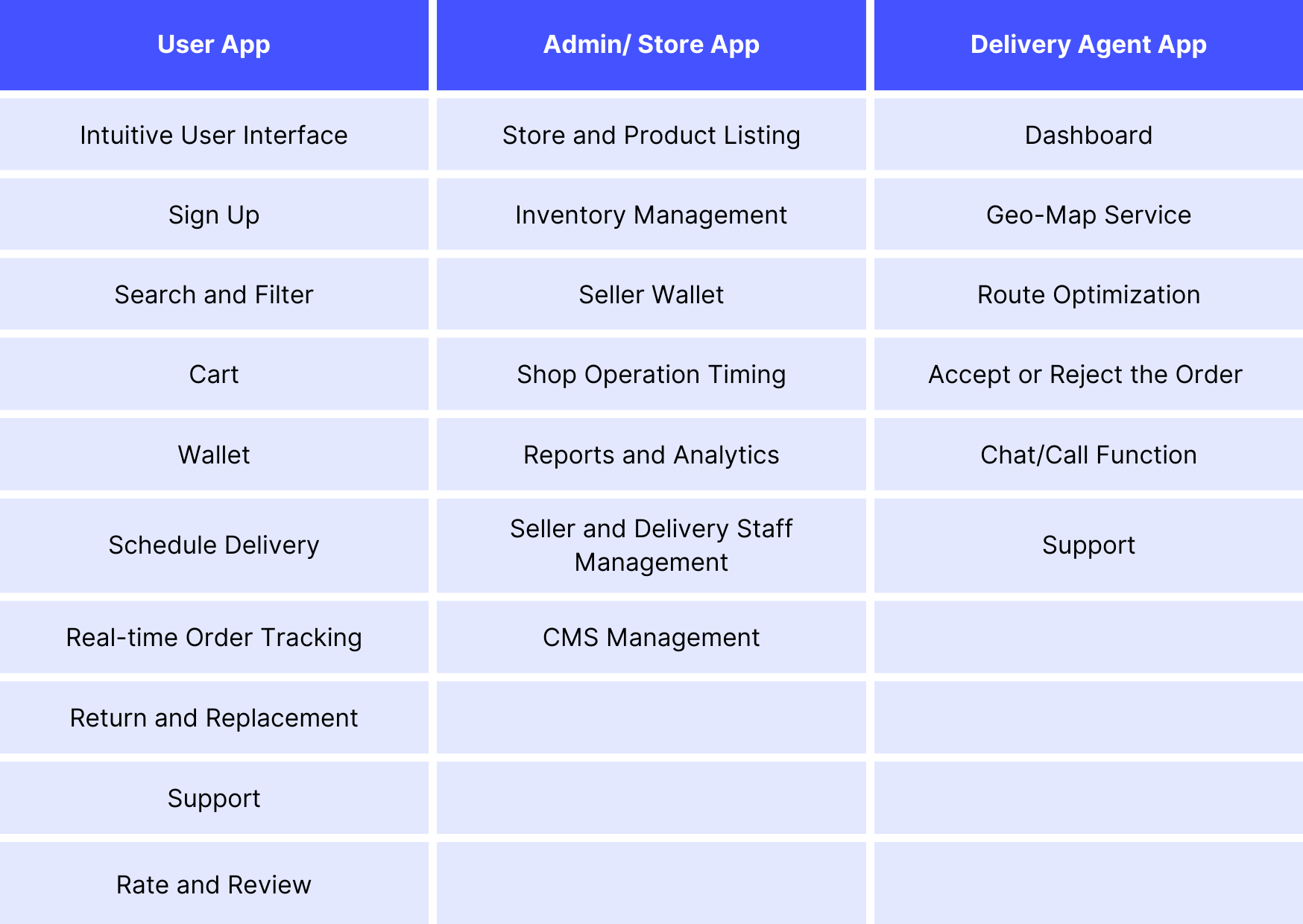Every demand calls for a supply that is always fulfilled sooner or later. So much so that things in demand are now delivered at our doorsteps.
Made possible by the advancement of technology! Now you do not have to stand in long queues outside a store just to buy your groceries.
That’s not news, right?
It was all made possible with apps like Instacart, which not only deliver groceries at your doorstep but also offer an user-friendly interface and a secure payment gateway.
But it takes more than just an interface and payment gateway to build an on-demand grocery app like Instacart.
Let’s walk through the process.
Understand The Popularity Of Grocery Delivery Apps
Yes, grocery apps are really high on app popularity charts. But why is it so?
Time-saving and Convenient
They save on commuting time from home to grocery stores and time spent on questing for different grocery items. Everything is right in front of your mobile screen.
Prevents Off-Hand Buying
Many times while visiting a grocery store, we often end up buying unnecessary things as well that are not even mentioned in the grocery list. With an app, it becomes easier to stick to the list and add only the required items in the cart.
Saves Money
These apps offer frequent discount coupons and special offers that not only saves money but also creates a sense of satisfaction in the customer’s mind. Afterall, a penny saved is a penny earned.
Map Out Your Customers’ Process
After understanding what makes grocery apps so popular, it is very important to learn what process your potential customers follow on these apps. This process will include:
- Signing up
- Choosing the grocery items
- Placing the order
- Scheduling the delivery time
- Paying for the items
- Getting it all delivered
Pretty basic, yet important.
Now it will be easier to figure out what your customers really expect in the app.
Select Your Business Model
There are various business models for any delivery app. Choose the one that is effective and the one convenient to you.
Multi-Vendor Marketplace model
This model comes with the advantage of not stocking items and coping up with the fluctuating market demand.
In this model, multiple vendors come together on one platform. When a customer places an order, the request is forwarded to the respective store. A delivery agent is assigned to pick up and deliver the items to the customer.
Inventory Model
This model requires you to maintain your own stock on items from different brands. In this case, the app will take orders from the customer. Rest is to be taken care of by you, right from packing the items to getting them delivered either by an internal or external agent.
Hyper-local marketplace
As the name suggests, hyperlocal marketplace offers ordering and delivery only in a small geographical area.
Since the deliveries are to be done within a specific area, this adds as an advantage to the customers of quicker deliveries (within an hour or so).
This is exactly the model that Instacart follows where it serves as a marketplace connecting all the local stores within that area. Customers get a privilege to select their preferred store, order and pay for their grocery and have it delivered within an hour.
Instacart Revenue Model – How Does It Make Money?
Did you know, Instacart made US $1.8 Billion revenue in 2021? Huge, isn’t it?
Therefore it is important to learn Instacart’s revenue model before building it’s clone:
Delivery Fee
Classic! Depending on the order size, charge your customers for the delivery.
Mark-up Prices
Many stores on Instacart mark-up their prices on the app than that they sell on in their stores.
Membership Fee
In the name of added privileges, luring more and more customers to join the membership program.
Draw your Budget
Now that you’ve researched your customers’ buying process and chosen your business model, it’s time to create a budget plan. Building apps like these can cost you a fortune, if not planned properly.
To estimate the cost of building the app, consider the three segments — User, Store/ Admin and Delivery Agent and the features that each app would require.
Essential Features

Lastly, Outsource A Development Company
Now that you’ve covered everything else, it’s time to get your ondemand grocery app ready. You’ll need a team of designers and developers who can help you build just the right app — both android and iOS.
You’ll need:
- A project manager
- Android developers
- iOS developers
- UI/UX designers
- QA specialists
- Backend developers
Or, just give Delby— your one-step solution to all ondemand needs, a try.
Delby comes with pre-built powerful features, analytics and intuitive interface for your users, delivery agent and you.

